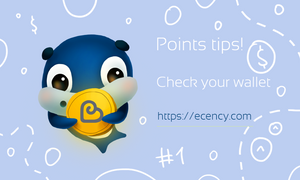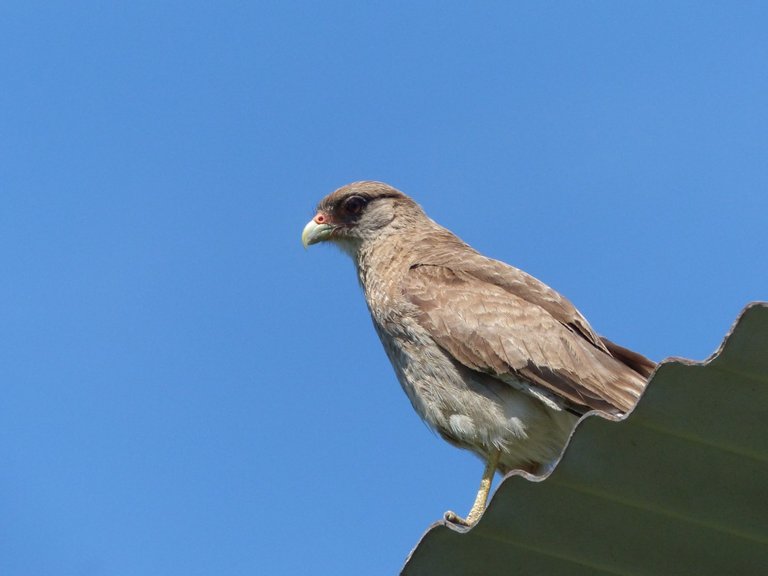
Este pájaro y yo no somos amigos. Hay muchas razones por las que estamos irremediablemente alejados. La genética, claro, que hace que yo no tenga plumas ni pico ganchudo. La cultura, también. Y el lenguaje, por supuesto; no entiendo sus chirridos, y al parecer el pájaro tampoco entiende mis conversaciones. Y, sin embargo, de algún modo, estamos cerca, al borde de nuestras limitaciones, a la orilla del río infranqueable de la palabra, apoyando la mano o la garra en un vidrio que hace las veces de frontera.
No somos amigos y, sin embargo, lo saludo cada vez que se posa en el poste de hormigón del alambrado, o en la pérgola donde enredan los tasis y las pasionarias. O cuando pasa volando, buscando comida, chillando. No soy su amigo, pero el pájaro lleva lo salvaje al extremo, y deja que me acerque a mirarlo o a sacarle fotos. Posa para mis fotos, podría decirse. Me mira él también. Y vuela cuando considera que la distancia entre nuestros mundos es demasiado estrecha. Hay algo casi místico en ese acercamiento. Yo volviéndome cada vez más salvaje, con un chillido en la punta de la lengua; el pájaro posando para las fotos; entrando, de algún modo, a la cultura. Son apenas unos pocos segundos. Valen la pena.
Ni siquiera podría asegurar que es siempre el mismo pájaro. No importa en realidad. Podrían ser varios y yo no sabría distinguirlos. No sé si es macho o hembra. Sé que es un chimango. El nombre científico es Daptrius chimango. Es un ave rapaz diurna, a diferencia de las lechuzas blancas que cazan en mi casa por la noche. Dicen que es territorial y agresiva. Compartimos el territorio, en el sentido más profundo. Somos el territorio. Pero yo también soy el mapa. Nuestro alambrado.
La gente de la zona no quiere a los chimangos. No son los más pájaros más bonitos. No tienen el canto más agradable. Tienen cara de malos. Comen carroña, pero no exclusivamente. Andan entre cosas podridas. Hay algo en ellos que nos recuerda a la muerte en su sentido más crudo. Pero son solo una parte más del círculo de la vida. Y más allá de nuestras metáforas, de nuestra belleza, bondad o dignidad, más allá de nuestra particular cultura, están vivos, y eso basta.
This bird and I are not friends. There are many reasons why we are hopelessly estranged. Genetics, of course, which means I have neither feathers nor a hooked beak. Culture, too. And language, of course; I don't understand his chirps, and apparently the bird doesn't understand my conversations either. And yet, somehow, we are close, at the edge of our limitations, at the shore of the impassable river of the word, resting our hand or our claw on a glass that serves as a border.
We are not friends and yet I greet him every time he perches on the concrete post of the wire fence, or on the pergola where the tasis and passionflowers tangle. Or when it flies by, looking for food, screeching. I am not his friend, but the bird takes wildness to the extreme, and lets me get close to look at him or take pictures. He poses for my pictures, you might say. He looks at me too. And it flies away when it considers that the distance between our worlds is too narrow. There is something almost mystical in that approach. Me getting wilder and wilder, with a squeak on the tip of my tongue; the bird posing for photos; entering, somehow, into the culture. It's just a few seconds. They are worth it.
I couldn't even be sure it's always the same bird. It doesn't really matter. There could be several and I wouldn't be able to tell them apart. I don't know if it's male or female. I know it is a chimango. The scientific name is Daptrius chimango. It is a diurnal bird of prey, unlike the white owls that hunt at my house at night. They say it is territorial and aggressive. We share territory, in the deepest sense. We are the territory. But I am also the map. Our wire fence.
The local people don't like chimangos. They are not the prettiest birds. They don't have the nicest song. They have a mean face. They eat carrion, but not exclusively. They walk among rotten things. There is something about them that reminds us of death in its crudest sense. But they are just another part of the circle of life. And beyond our metaphors, beyond our beauty, goodness or dignity, beyond our particular culture, they are alive, and that is enough.

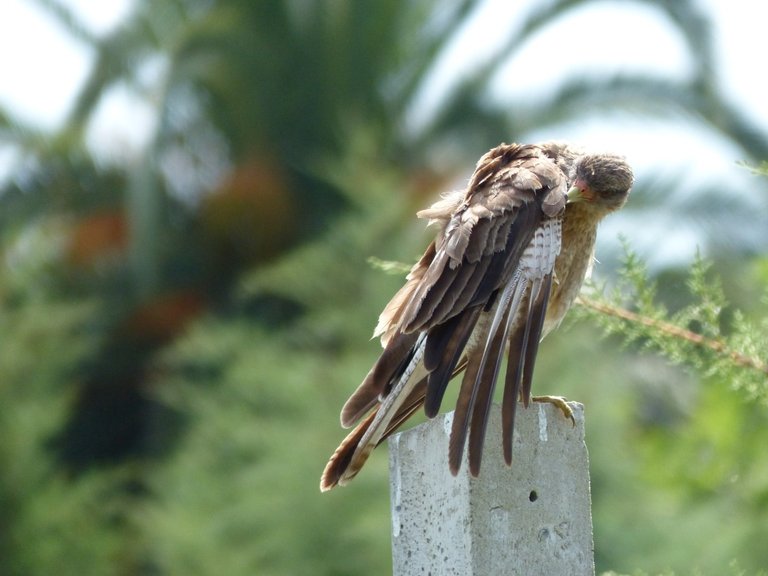

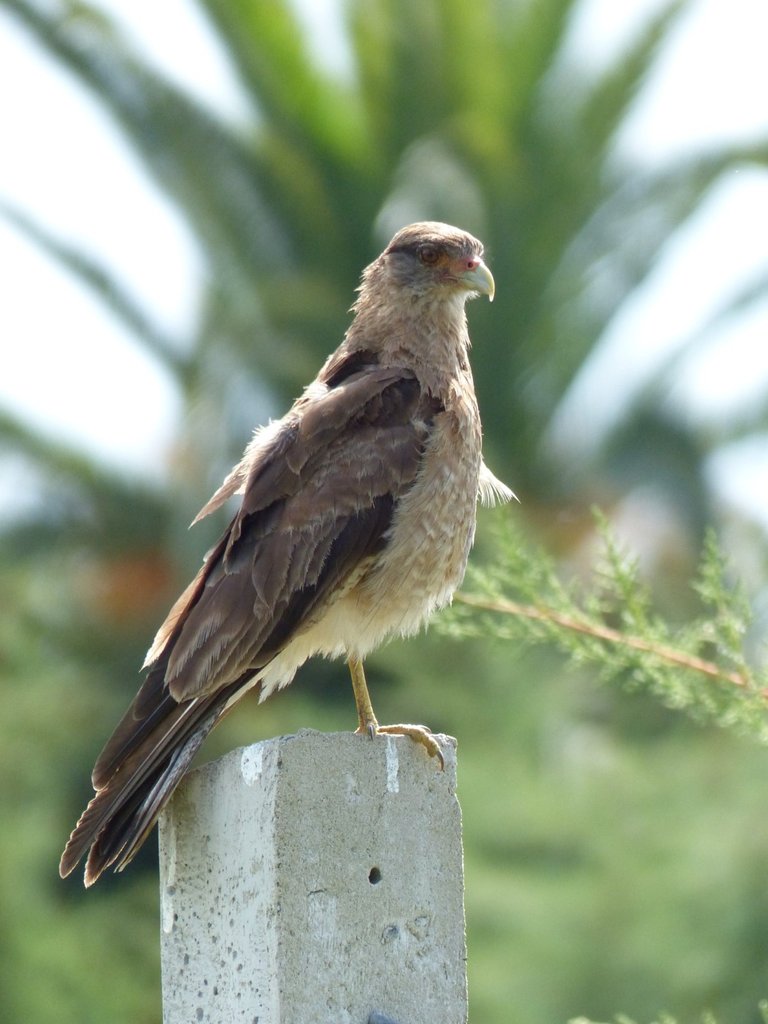

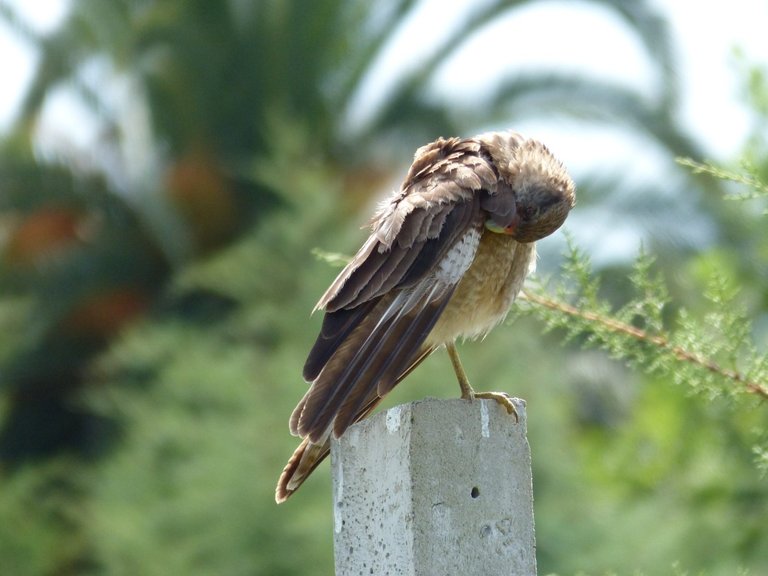
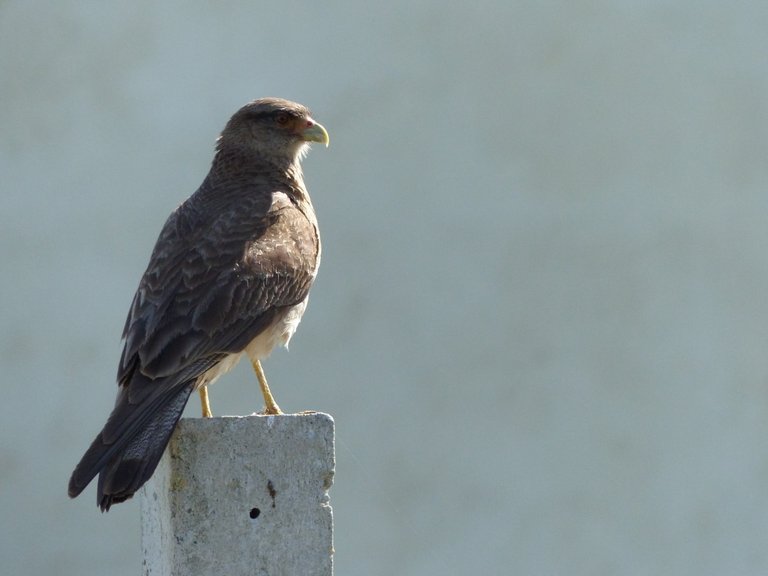
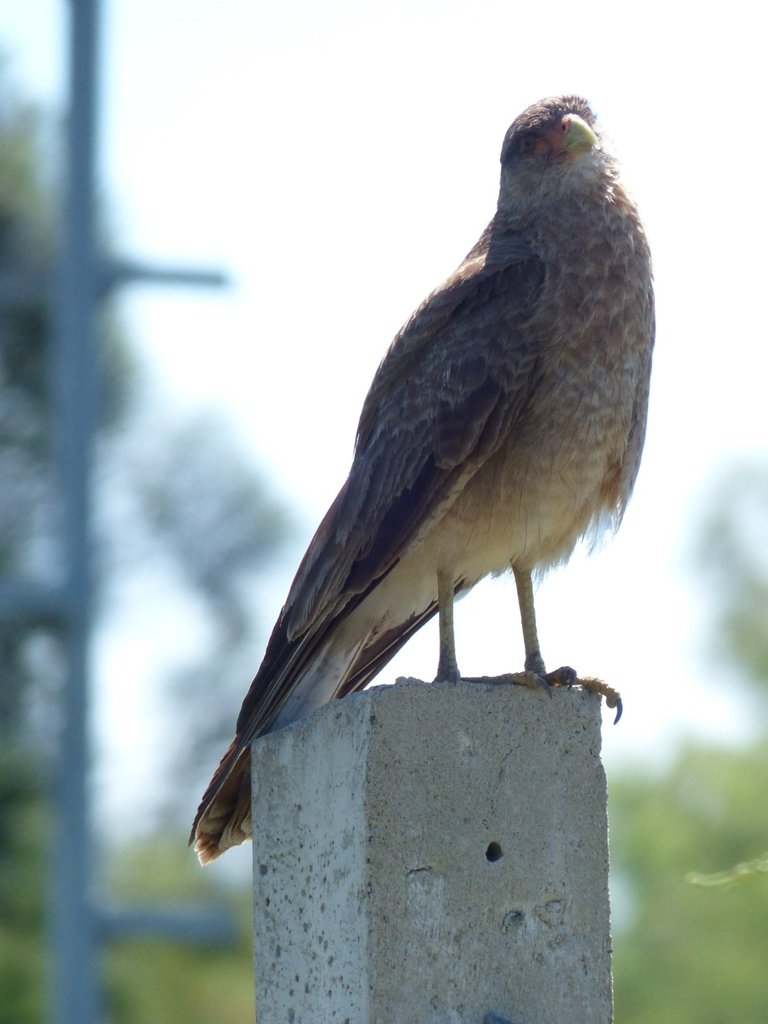


Original en español. Traducido con Deepl.
Todas las fotos son propias.
Original in Spanish. Translated with Deepl.
All photos are my own.



